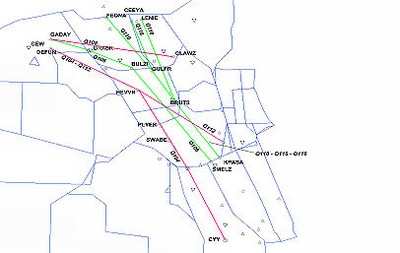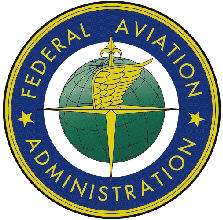Tue, Aug 16, 2005
NBAA tells ANN that in
recent years there has been substantial traffic volume from
November through March to and from Florida with no accompanying
changes in airspace, which has resulted in airspace complexity that
led to delays and extended routings for operators. However, after
working with NBAA and other aviation groups, the FAA is on the
verge of implementing significant changes to both enroute and
terminal airspace in Jacksonville and Miami air route traffic
control centers (ARTCCs) and various terminal radar approach
controls (TRACONs) in Florida.
On September 1, 2005, a variety of "Q Routes" utilizing RNAV
procedures both to and from various Florida airports will go into
effect for aircraft capable of filing equipment suffixes /E, /G,
/R, /J, /L, or /Q. NBAA has worked with the FAA for several years
to develop these advanced navigation routes, which were first
introduced in the Northwest and Western U.S. two years ago.

Additionally, in November 2005, the Florida Airspace
Optimization (FAO) project will introduce new airspace sectors,
revised preferential routing, offshore routes and standard terminal
arrival routes (STARs) – both conventional and RNAV. The FAO
is the culmination of months of work between NBAA, the FAA and
other aviation interests.
A variety of customer benefits are expected from the FAO effort,
to include:
-
 Reduced distances on STARs and
preferential routes
Reduced distances on STARs and
preferential routes
- Reduced foreign fees (by reducing reroutes into foreign
airspace)
- Reduced miles in trail
- Reduced enroute vectoring and speed control in ZMA and the
Caribbean
- Reduced departure delays for Northeast airports
- Reduced departure delays for Florida airports
FAO changes will be implemented in three phases: August 15, 2005
(some ZMA sector changes); October 27, 2005 (more ZMA and ZDC
sector changes, all route and STAR changes); and December 12, 2005
(last ZMA sector changes).
The FAA will host a meeting about the FAO effort at the Miami
Airport Hilton on September 29 from 9:00 a.m. to 4:00 p.m.
More News
Aero Linx: Model Aeronautical Association of Australia MAAA clubs are about fun flying, camaraderie and community. For over 75 years, the MAAA has been Australia’s largest fl>[...]
Touchdown Zone Lighting Two rows of transverse light bars located symmetrically about the runway centerline normally at 100 foot intervals. The basic system extends 3,000 feet alon>[...]
“Discovery and innovation are central to our mission at Virgin Galactic. We’re excited to build on our successful record of facilitating scientific experiments in subor>[...]
How To Get A Story On Aero-TV News/Feature Programming How do I submit a story idea or lead to Aero-TV? If you would like to submit a story idea or lead, please contact Jim Campbel>[...]
Student Pilot Reported That During Rotation, “All Of A Sudden The Back Of The Plane Kicked To The Right..." Analysis: The student pilot reported that during rotation, “>[...]
 ANN's Daily Aero-Linx (05.02.24)
ANN's Daily Aero-Linx (05.02.24) ANN's Daily Aero-Term (05.02.24): Touchdown Zone Lighting
ANN's Daily Aero-Term (05.02.24): Touchdown Zone Lighting Aero-News: Quote of the Day (05.02.24)
Aero-News: Quote of the Day (05.02.24) ANN FAQ: Contributing To Aero-TV
ANN FAQ: Contributing To Aero-TV NTSB Final Report: Cirrus Design Corp SR20
NTSB Final Report: Cirrus Design Corp SR20




